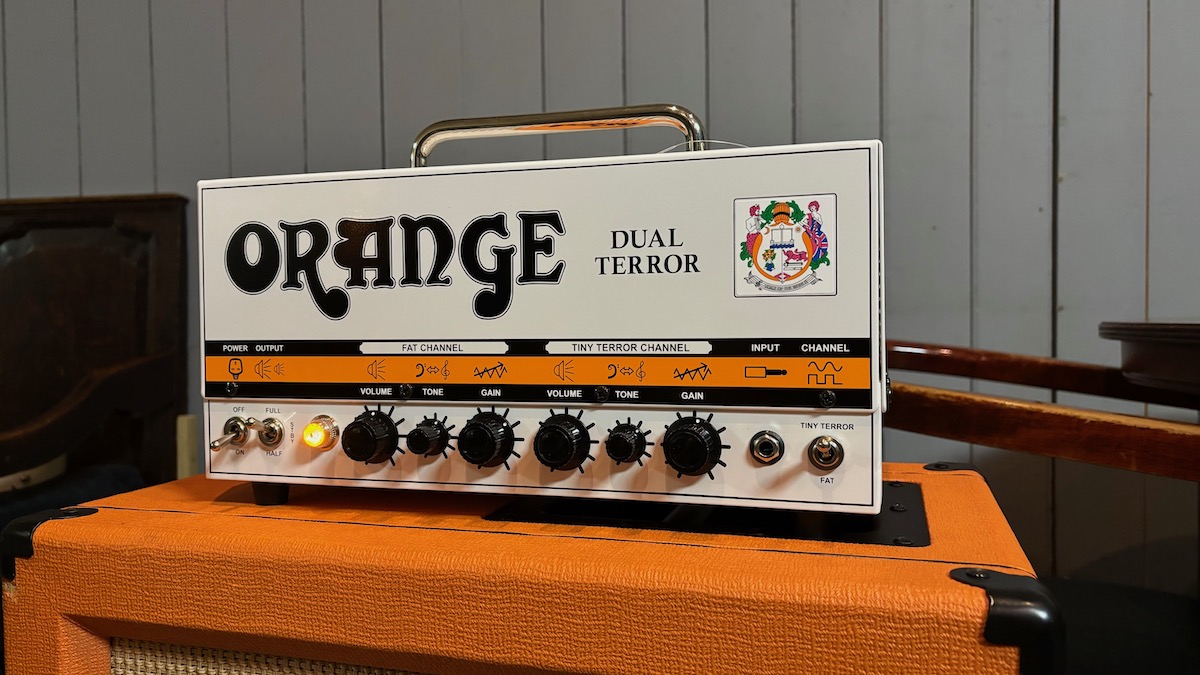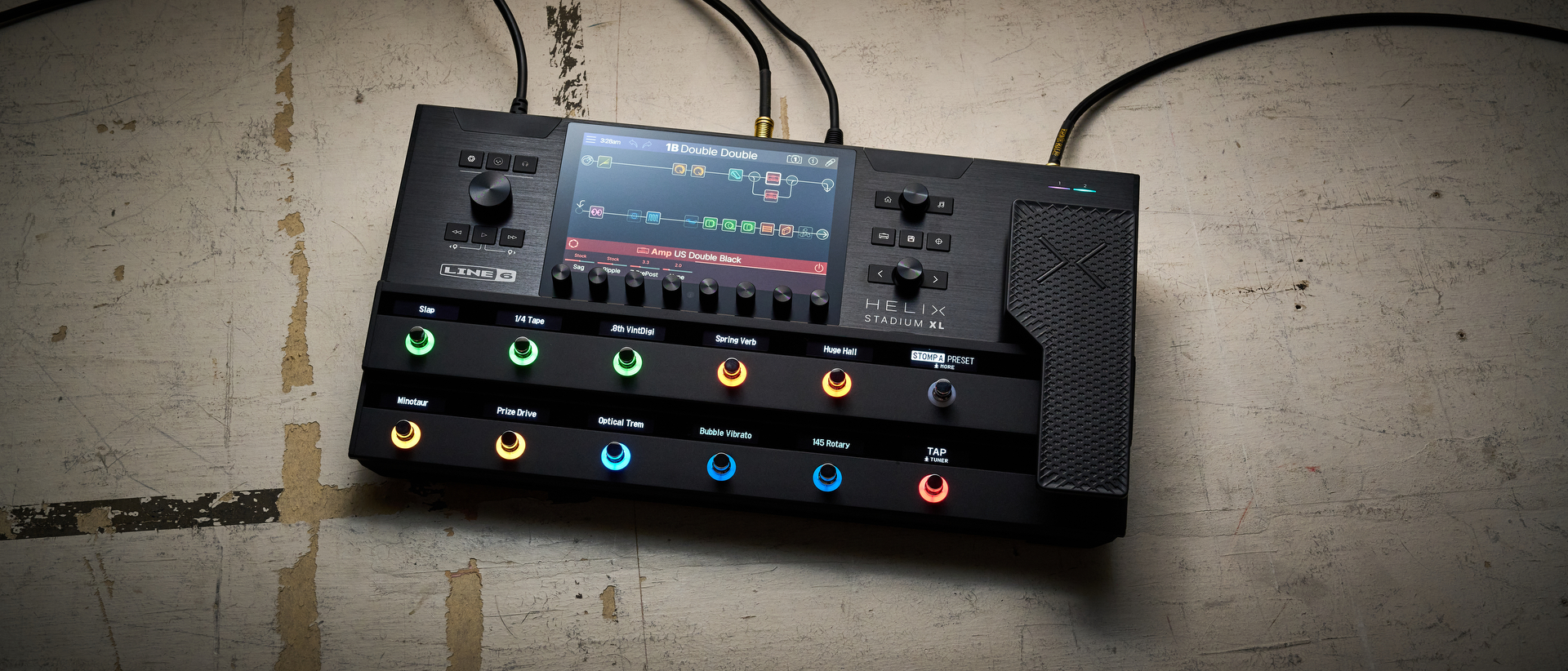Guitar World Verdict
Capable of everything from sparkly cleans to powerful distorted tones and with a super easy-to-use layout, the Orange Dual Terror could well be the perfect affordable gigging dual-channel head out there right now.
Pros
- +
Incredible crunchy and distorted tones
- +
Does cleans well too, with 30W of headroom
- +
Two channels make it perfect for channel switching or solo boosting
- +
Simple and easy to use
- +
Has that classic British Orange tone
Cons
- -
Reverb would make it even better
- -
You want something with more clean headroom
You can trust Guitar World
What is it?
The Orange Dual Terror builds on the legacy carved out by its younger sibling; the Tiny Terror. The Tiny Terror, released in 2007 started the whole lunchbox amp craze, and was famed for its incredible, raw, crunchy tones. So much so that it’s still a mainstay in studios around the world, next to amps that cost nearly 10x as much.
So what is the Dual Terror? It’s a dual channel, 30W tube amp head boasting 4x ECC83/12AX7 tubes in the preamp section, and 4x EL84s in the power amp. You’ve also got the option to lower the output to 15 and 7W making it just as suitable to home and studio use as it is for live shows. It's also one of the top picks in our guide to the best Orange amps.
Looking at the amp, it sports a very basic layout. Both channels each have controls for volume, tone and gain. There’s a switch that lets you select which channel you’re using, though this can also be done via footswitch, and on the back you’ve got a switch for selecting how many output valves are running (two or four).
Specs
- Launch price: $899/£559
- Type: Tube head
- Tubes: 4 x ECC83/12AX7 preamp, 4 x EL84 power amp
- Channels: 2
- Power: 30W (switchable to 15 and 7)
- Controls: Volume, Tone, Gain for each channel, On/Off switch, Full, Half & Standby switch, Channel select switch, Output Tube select switch (on back)
- Outputs: 2 x 8ohm & 1 x 16ohm speaker outputs, footswitch jack
- Weight: 9.75kg (21.5lb)
Build quality
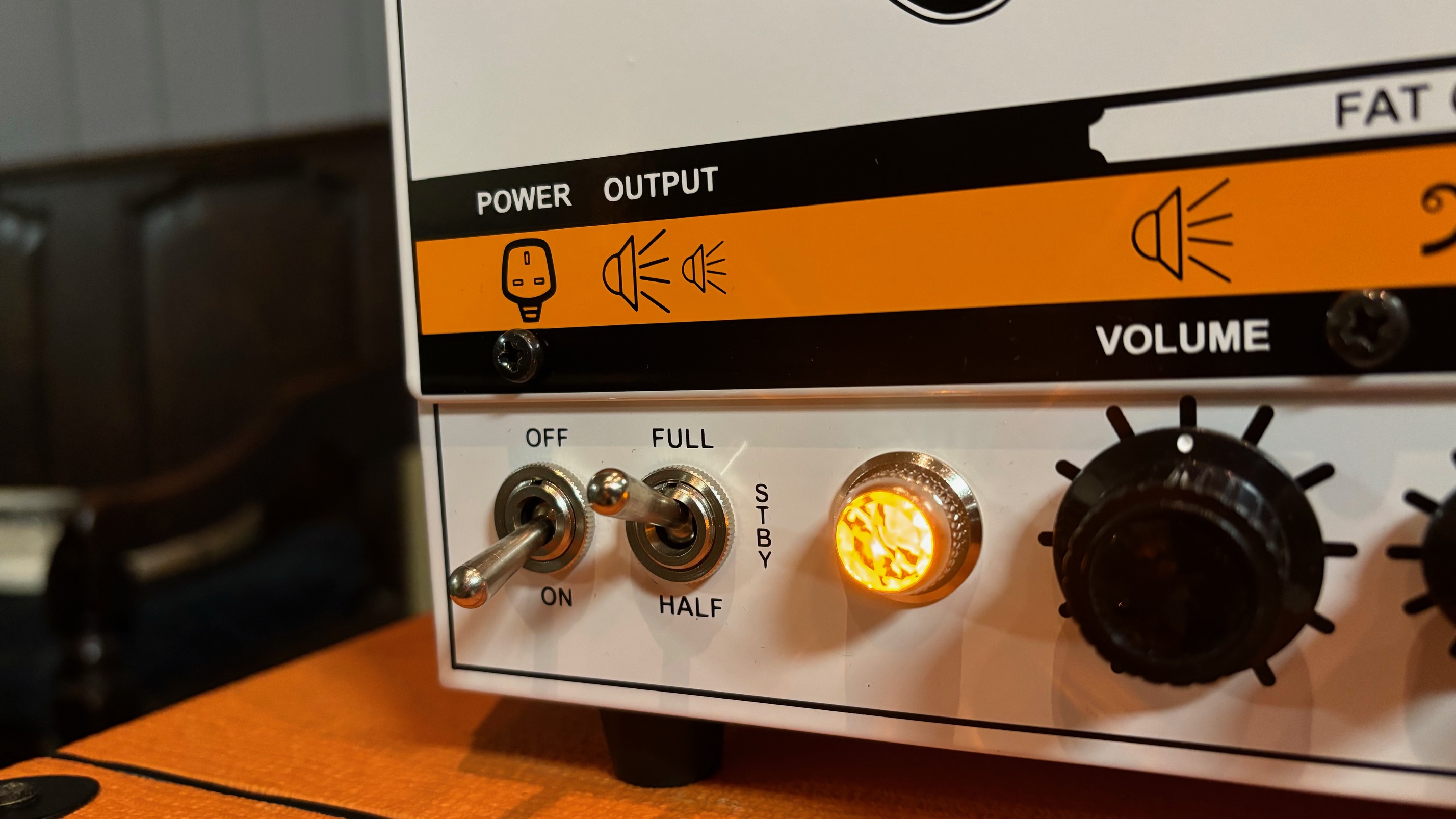
Build quality rating: ★★★★★
In terms of its physicality, it’s quite compact, especially compared to some other 30W tube heads on the market. It’s bigger than the Tiny Terror, but you can still class it as a ‘lunchbox’ amp. It also weighs just under 10kg, so if weight and size are a consideration, then it wins out here too.
The only improvement that could be made to this amp for me personally, would be the addition of reverb (like the one found on the Rockerverb), though to be frank, that wouldn’t be fair on every other amp under $/£1,000!
Usability
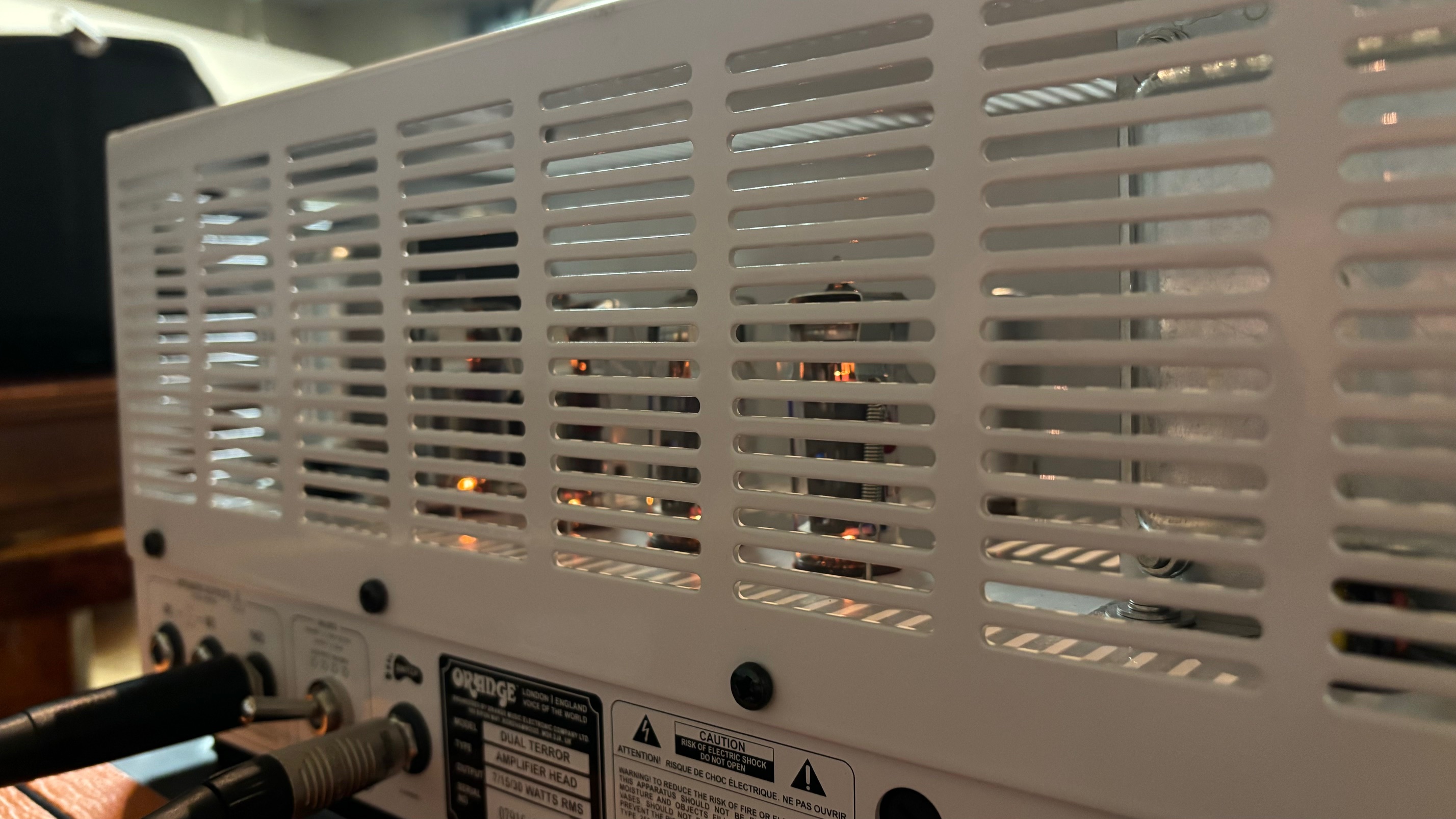
Usability rating: ★★★★½
All the latest guitar news, interviews, lessons, reviews, deals and more, direct to your inbox!
The single tone knob per channel might seem limiting at first, but it’s actually super easy to dial into whatever guitar you’re using to get the sound you like. I tried a few different guitars with it, and could very quickly dial in the sweet spot for each set of pickups.
Like the gain knob, there’s quite a bit of sweep in the tone control, so even though it’s just one knob, it actually does quite a lot.
In terms of power reduction, you’ve got the option of Full and Half modes on the front and then on the back, the ability to reduce the power output tubes from four to two. Both of these let you run the amp at lower volumes while still being able to push enough signal through the amp to get that lovely organic breakup. If it’s headroom you want, keep everything set to full and you’re good to go!
Sounds
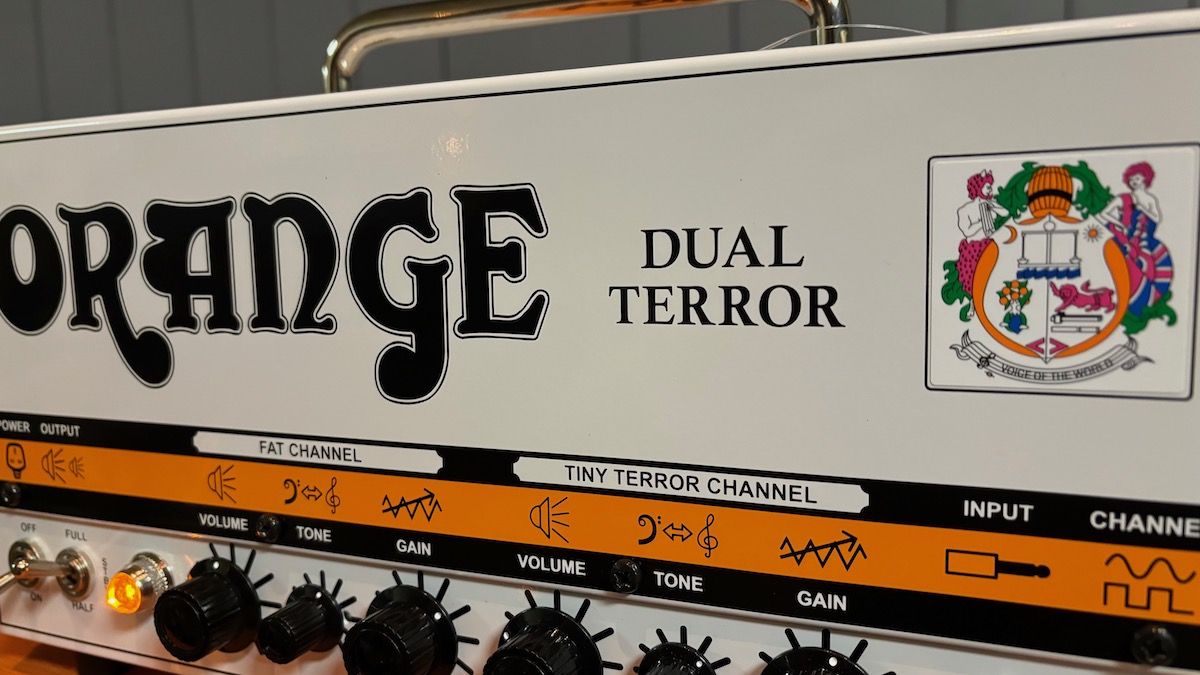
Sounds rating: ★★★★★
So, what does the Dual Terror sound like? On the Tiny Terror channel, you’ve got a range of tones at your disposal. With the gain dialled down, and the volume up, you’ve got a really nice clean tone that you can get pretty loud – perfect if you like to get most of your tones from pedals. However, I can’t imagine it would be your first choice of amp if all you’re after is a blank canvas.
Chances are, you’d buy this amp for its crunch and overdriven sounds. As you increase the gain, you start getting that raw, on-the-edge-of-breakup sound that many tube amp devotees claim can’t be replicated by digital technology. It’s super reactive to your playing dynamics and responds differently to various guitars and pickups.
Playing a Telecaster through it, you can get a lovely clean sound using a light touch; the more you dig in, the more bite you get. With my SG, it was more a case of rolling back the volume slightly for clean sounds then turning it up and increasing the picking attack for crunchier tones.
Despite only having three knobs per channel, it’s perhaps surprising the range of sounds you can get out of it
Despite only having three knobs per channel, it’s perhaps surprising the range of sounds you can get out of it. Each small turn of the gain knob brings you something slightly new, all the while retaining that quintessentially ‘Orange’ tone – raw, quite present in the upper mids, and exciting.
With the gain around halfway, you’ve got a really nice indie tone – there’s plenty of jangle and chime present using something like a Tele or Jazzmaster. Past that, you’re into pure rock territory. Whether you’re playing blues rock, classic rock, contemporary – the Dual Terror can do it all.
There’s a nice bit of natural compression that occurs too as you turn the gain up; not too much to lose any dynamics but enough to help your playing out a little!
One thing to note is that as you increase the gain, the amp does pump out more volume so you do constantly have to balance them. It’s not a drawback, but some players might need to get used to it.
Switching over to the Fat channel, it’s more of the same really, though slightly – well – fatter. It’s got a touch more gain, and it’s a little thicker sounding but they’re very much in the same ballpark in terms of tone.
Can it do metal? At a push, with no pedals, I’d say that it could. It’s not super high-gain, but if you’ve got some high output pickups and the gain cranked high, you’d probably get enough chunk to get through a metal set. However, set the gain just below full and push it with a boost or override pedal, and it makes for a perfect metal amp.
Two footswitchable channels makes this amp extremely convenient for live use. In fact, if you’re looking for a no-nonsense giggable tube head that can cover a lot of ground, then there isn’t much that beats the Dual Terror – not at this price point anyway.
With the two channels and 30W of headroom, you can set one channel up fairly clean, and the other dirty giving you two very distinct sounds. Alternatively, you can set one with some drive for your rhythm sound, and then the other with more volume and gain for the perfect boost for solos. Because of the interaction between the volume and gain controls on each channel, there really are so many different ways you can set it up.
It’s really easy to use, in fact, it’s pretty hard to get a bad sound out of it. It’s versatile too - you could play everything from country or jazz to hard rock on this thing. The Dual Terror’s two channels work really well together and make it an excellent choice for anyone looking to play live. It really is a worthy successor to the legendary Tiny Terror!
Final verdict
If you’re looking for an all-tube head that can deliver a range of incredible crunchy and distorted tones, without any surplus features, nothing beats the Orange Dual Terror. The amp’s two footswitchable channels make it perfect for playing live, though the power reduction options also make it ideal for the studio, or even home use too.
After spending a decade in music retail, I’m now a freelance writer for Guitar World, MusicRadar, Guitar Player and Reverb, specialising in electric and acoustic guitars, bass, and almost anything else you can make a tune with. When my head’s not buried in the best of modern and vintage gear, I run a small company helping musicians with songwriting, production and performance, and I play bass in an alt-rock band.
